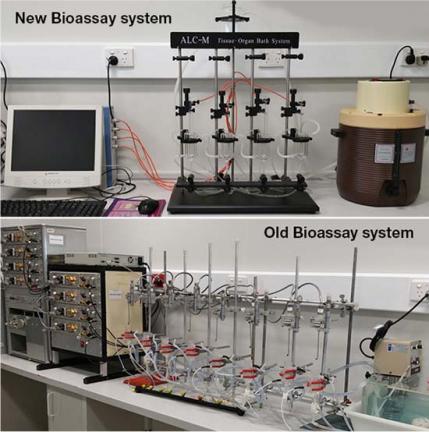
Uterine Contraction Bioassay is one of the fundamental laboratory techniques used within the Centre to study contractile forces.

A Chinese company’s generous equipment donation is allowing scientists from HMRI’s Mothers and Babies Research Centre (MBRC) to better understand the physiology of human birth and develop therapies for preventing preterm labour.
Uterine Contraction Bioassay is one of the fundamental laboratory techniques used within the Centre to study contractile forces.
It involves obtaining uterine biopsies from women giving birth by caesarean section, then carefully dissecting the tissue into small strips. The individual strips are connected to an organ bath culture system for monitoring.
Professor Roger Smith, head of the MBRC, says the technique is extremely powerful in that researchers can apply desired treatments to the tissue and observe the effect on human uterine contractions in real-time.
“Until now our researchers have relied on outdated analogue hardware for performing this important technique, which was complex, unreliable and required frequent recalibration,” Professor Smith said.
“We are very grateful to Shanghai Alcott Biotech for the donation of a new, streamlined system for isolated tissue-organ research.”
The unit occupies a fraction of the bench space and provides integrated digitisation of all research data.
“The monetary value of the donation is significant and Shanghai Alcott Biotech’s generosity will ensure MBRC researchers can continue to use this research technique for years to come,” Professor Smith said.
* Professor Roger Smith is from the University of Newcastle and Program Leader of the HMRI Pregnancy and Reproduction Research Program. HMRI is a partnership between the University of Newcastle, Hunter New England Health and the community.